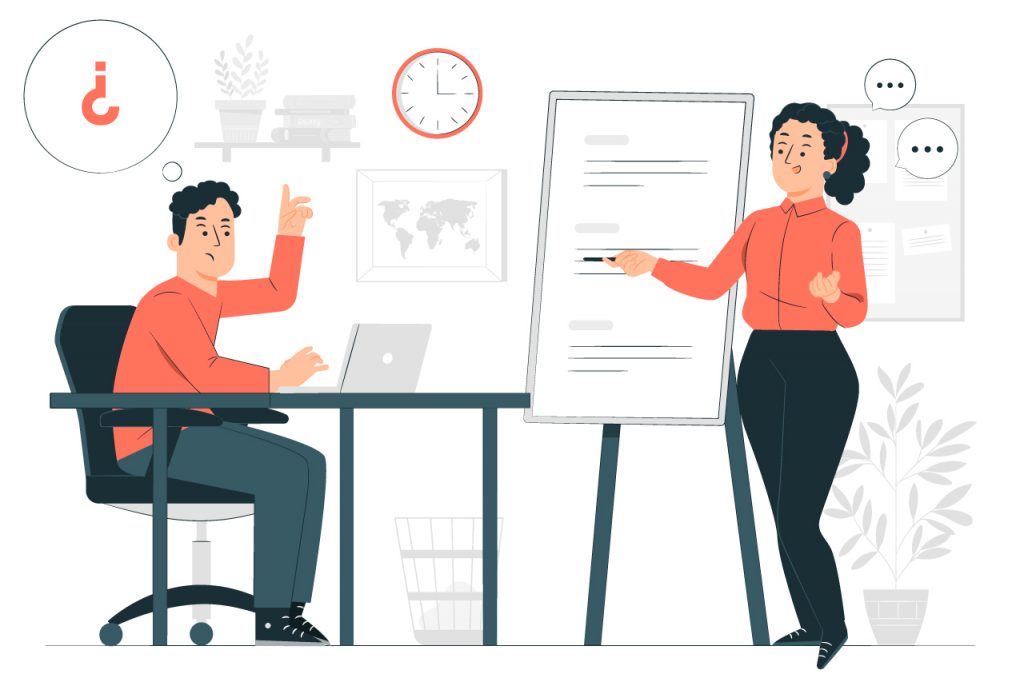Once you’ve been training or teaching for so long, it can be hard to remember what it was like before you became an expert.
If you spend every day training others to become great in your area, it’s difficult to fathom what life is like without having that knowledge. This can apply as much to organizational trainers as it does to a 3rd-grade math teacher.
It’s so easy to forget that everything in life has to be learned. No one is born with innate knowledge, but that knowledge gap between trainer and learner can often cause a barrier when it comes to teaching.
Let me give you a quick analogy so you can understand.

The Analogy
Pretend we’re both traveling to my hometown of Northfield, MN and we’re going to meet at the park.
So I give you these directions:
“Go down Highway 3 past the Taco Bell and take a right where the Byzantine used to be (where The Grind was). Cross the bridge by where the Archer House used to be and follow the hill by the library for a few blocks passed the Middle School.”
See a problem there?
Unless you lived in that small town in the 90’s and early 2000’s these kinds of directions would be almost impossible to follow. You couldn’t even make the first turn.
But if I told someone from my town those same directions, they’d have no issues whatsoever getting to the park.
So why is it so difficult for you to understand the instructions that someone else could follow easily?

Past Experiences
The biggest problem in that analogy is the gap between past experiences.
I spent years in that town and know it like the back of my hand. But this is your first time coming to visit, so how are you supposed to instantly recognize landmarks or know which places used to be there?
Now let’s translate this over to a training seminar.
Pretend I’m having a training session for leaders to become better at incorporating diversity and inclusion within their organization.
If I start to instantly reference well-respected DEI specialists, diversity advocates, and specific points from papers by Kimblerlé Crenshaw – many learners will probably look at me with their eyes glazed over.
Even if everything I’m saying is true, nothing is connecting with them in any meaningful way.
That’s because there’s an enormous gap between the trainer’s understanding of the subject and the learner’s. Trainers have tons of past experiences and knowledge that the learners have no reference for in their brains. It’s the classic curse of knowledge.
So here’s the real challenge: bridging that gap.

How to Fix It
This is an issue for teachers and trainers in areas of education. Fixing it takes some reflection, interpersonal skills, and a willingness to connect with your learners.
So here are a few things we can do to improve:
Make things relevant
Start giving examples and instructions for people that are actually relevant to them in their life.
In your training sessions, you need to do everything you can to make absolutely every activity relevant to their everyday life. Point out landmarks that they already know, then move on from there.
Learning is all about connection. You have to find some way to connect the strategies and ideas you want to convey with aspects of their life that they know well. If there is no connection, there won’t be any learning.
Put yourself in their shoes
Take some time to do some reflection and put yourself in your learners’ shoes. Remember that they are going to have different perspectives, points of reference, and understandings about the subject.
It’s no easy task because it means that you have to adapt every training session to your specific group – but it will make sure that they are that much more effective.
And you can make it a little easier by following the last strategy:
Get their input
It’s as easy as reaching out and asking them. It’s one of the missing pieces in movement education.
Join them for the ride and ask them to show you the landmarks they know. Point out new landmarks together and establish a connection that will last.
In your training, you just ask them about what they DO know and what they’d LIKE to know. Start from there and connect to things they didn’t even know that they didn’t know.
This type of participatory learning is the best way to make sure that their voices are heard and that the session is even more relevant and impactful.

Become a Better Trainer
As changemakers, we just want to help people arrive at their destination and make the journey even better.
No matter what your goals are, we always need to be thinking about our learners’ goals, too. Put yourself in their shoes and do your best to keep them from feeling absolutely lost.
What do you think about this analogy? Did you find it helpful? Let us know in the comments below!





